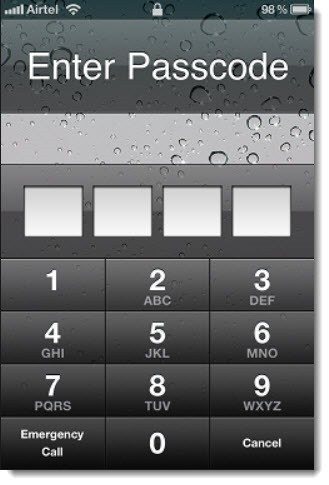It’s widely expected that Apple will add a fingerprint reader to the next iPhone, scheduled to be announced on September 10. If the rumors are right, your thumb will unlock the phone when you press the button at the bottom. To be successful, it has to be nearly 100% effective but that might be possible – Lenovo’s fingerprint readers in Thinkpads have become very reliable and Apple purchased leading mobile security company Authentec last year and presumably has been working on improving Authentec fingerprint sensors.
Apple’s influence is declining but its product decisions still get tremendous attention from the media. If Apple adds fingerprint security to the iPhone (and it’s still just a rumor), it may draw attention to the importance of securing your phones and tablets. Everyone should have that in mind, not just new iPhone users!
The need for security should be obvious for anyone in business or law.
Your mailbox is on your phone – all the email messages to and from clients and competitors; all the messages about this year’s business plan; the calendar that shows appointments with bankruptcy advisors and divorce counsel; and many more things that might cause you harm if the phone fell in the wrong hands.
It’s commonplace now to have your business documents available on your phone or tablet. Services like Skydrive and Dropbox make it easy to access all of your data from your mobile devices, ready to be downloaded with a single click.
Smartphones and tablets are easy to lose and easy to steal. Anyone can pick up your phone or your tablet and access all the apps on it. They can read your mail and open your documents. Sudden loss of your mobile device can undo all your office security precautions.
There are two things you should do.
First: set up a lock screen.
All smartphones and tablets can be set up with a lock screen that requires something to be entered before they will unlock.
The new iPhone might require a fingerprint. Most tablets and phones can be set up to require a PIN to be entered on a numeric keypad. I draw three gestures on a photo to unlock my Surface tablet.
If your phone has confidential data on it, set it to lock when it goes to sleep. You will have to put in that PIN every time you use the phone, which is frustrating, but there will be no excuse if you blow a client’s privilege by losing unprotected confidential documents and emails.
Second: become familiar with the methods to wipe the data from a phone or tablet if it is lost.
The methods vary from phone to phone, platform to platform. There are a few links on the Bruceb Favorites page under Mobile / Find And Wipe. iPhones can be wiped from iCloud / Find My iPhone if the right feature is enabled on the phone. Windows Phones can be wiped from WindowsPhone.com / Find My Phone. There are third party apps to find, lock, and wipe Android devices. (Prey for Android is a good example, but there are dozens more.)
Office 365 subscribers can wipe the mailbox data from lost phones. Log into Outlook Web App and click on the gear in the upper right corner, then click on Options / Phones.
Security is a never-ending battle. There is a price that goes along with the convenience of having all our data at our fingerprints. Don’t be caught unaware if you lose your mobile device!


Don’t forget to encrypt your phone’s hard drive and storage drive!